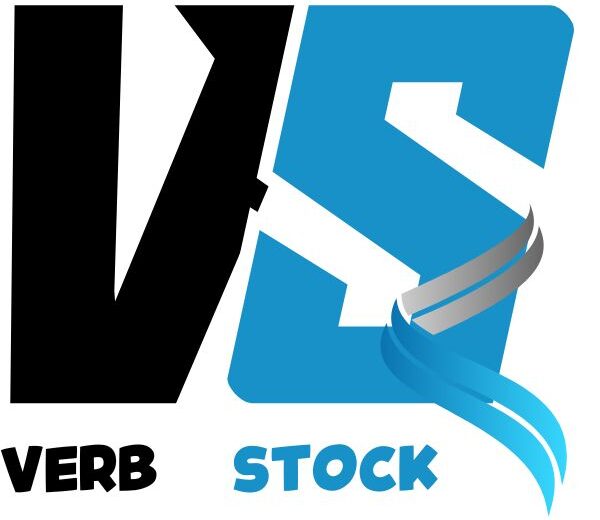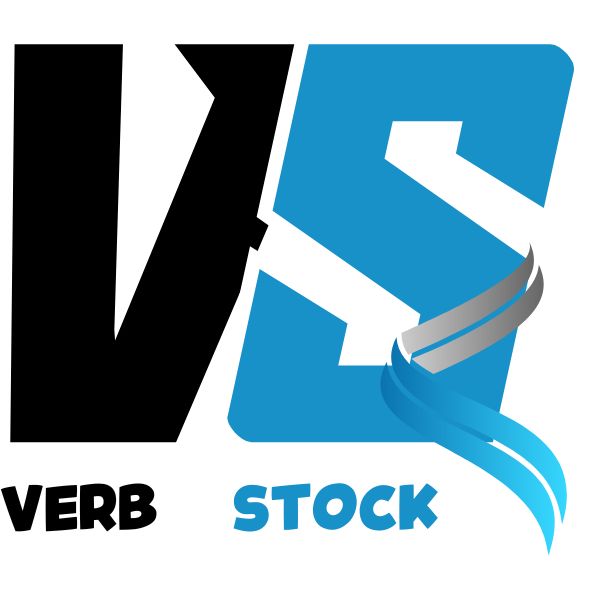WSP meaning is an abbreviation commonly used in texting and online chats. It stands for “What’s up?” and is used to ask someone how they are or what they are doing. It’s a casual way to start a conversation.
Have you ever received a message with “WSP” and not known how to reply? It’s a quick and friendly greeting used by many people, especially in informal chats. Let’s explore how it’s used.
The WSP meaning is often used between friends or acquaintances. It’s an easy and fast way to check in with someone. Next time you see it in a message, you’ll know exactly what it means and how to respond!
What Does “WSP” Mean? Understanding the Acronym
WSP Definition
At its core, WSP stands for “What’s up?” It’s an abbreviation commonly used in text messages, group chats, and social media platforms. This casual phrase is a quick and informal way to ask someone how they are doing, what they are up to, or if there’s anything new in their life.
In essence, WSP means a laid-back, friendly way to check in with someone without requiring a formal response. It’s similar to saying “Hi, how’s it going?” but with a bit more speed and brevity. So, when you see WSP in text or hear someone use it online, you can be sure they’re simply asking, “What’s going on?”
What is WSP Mean in Texting?
WSP text messages are often used as a way to start a conversation, especially when you haven’t spoken to someone in a while. It’s an easy and quick opener, helping you kickstart a chat without the need for any lengthy introductions.
For example:
- “WSP? Haven’t heard from you in a while!”
- “Just got home. WSP with you?”
- “Hey! WSP? How was your day?”
These texts are short, to the point, and let the other person know that you’re interested in reconnecting without any pressure for a long reply.
How to Use “WSP” in Different Settings
Now that we understand the basic WSP definition, let’s dive deeper into how this abbreviation is used in various contexts. Whether you’re at a casual dinner party or hosting an international guest, WSP is versatile enough to fit many situations.
For a Dinner Party
When hosting a dinner party, WSP can be used as an informal greeting when guests arrive. It sets a fun and relaxed tone for the evening, letting people know that you’re excited to see them. You can use it to check in with your guests as the evening progresses.
Example:
- “WSP everyone, what’s on the menu tonight?”
This keeps the atmosphere light and easy-going.
For Overnight Stays
If someone is staying with you overnight, WSP can help you maintain a comfortable, informal environment. It’s a great way to check in without sounding too formal, especially when you’re just waking up or winding down for the night.
Example:
- “WSP? How’d you sleep last night?”
Using WSP here ensures your guest feels relaxed and at ease.
For Holiday Gatherings
During holiday celebrations, where things can get busy and chaotic, WSP can be the perfect greeting to keep things fun and light. Whether you’re with family or friends, it’s a friendly way to start conversations in the middle of all the excitement.
Example:
- “WSP, how’s the holiday shopping going?”
A quick, casual check-in like this is ideal for sparking conversation without disrupting the festive mood.
For Casual Get-Togethers
Whether you’re meeting for coffee, catching up with old friends, or just hanging out at a local spot, WSP is the go-to greeting. It sets the right tone, keeping things easy and breezy.
Example:
- “WSP? You up for a movie marathon?”
This works great in both text and face-to-face situations, making it a perfect phrase for informal gatherings.
For Extended Stays
When someone is staying with you for a longer period, you want to keep things comfortable without being too formal. WSP helps maintain that casual vibe throughout their visit, whether you’re checking in on how they’re feeling or asking if they need anything.
Example:
- “WSP, do you need anything while I’m here?”
It’s a laid-back way to make sure they’re doing fine during their extended stay.
For Business Hospitality
Although WSP is generally casual, it can still work in business environments, provided the tone is appropriate. If you’re hosting a colleague or client in a less formal setting, WSP can be a great way to break the ice.
Example:
- “WSP, how’s the project going?”
This keeps things light while maintaining a degree of professionalism.
For Cultural Exchanges
When engaging in cultural exchanges, whether traveling abroad or hosting someone from a different country, using can be a fun, universal way to make the conversation feel more casual and welcoming. While you may not know all the formalities in the guest’s native language, WSP provides a simple and friendly greeting that transcends cultural barriers.
Example:
- “WSP, how are you finding the culture here?”
It’s a great way to show interest in their experience while still maintaining a relaxed and informal tone. WSP can be particularly helpful in situations where you want to connect with someone quickly and ensure the conversation flows naturally.
For Unexpected Kindness
WSP can be a perfect way to express appreciation when someone unexpectedly does something kind for you. Whether it’s a surprise gesture, a thoughtful favor, or just checking in when you’re having a rough day, sending a can be a lighthearted way to acknowledge their kindness without making it overly formal.
Example:
- “WSP, that was so kind of you to help me today!”
It keeps the tone upbeat and allows you to convey gratitude while maintaining a friendly connection.
For Hosting Events
If you’re hosting an event—whether it’s a casual get-together, a celebration, or a family gathering—WSP works wonderfully as an icebreaker. You can use it as a greeting to check in with your guests and make sure everyone is enjoying themselves. It’s an easy way to keep the energy flowing, especially in less formal settings.
Example:
- “WSP, everyone ready for some fun?”
Using WSP here helps create a relaxed atmosphere where guests feel comfortable engaging with one another.
For Showing Around Town
When you’re showing someone around your city or local area, WSP is a great conversation starter. It lets the person know that you’re happy to be their guide and are interested in their thoughts on the experience so far. Whether they’re a visitor or just a friend who hasn’t been around in a while, WSP shows that you’re eager to connect and make their time enjoyable.
Example:
- “WSP, what do you think of the city so far?”
This makes for an easy check-in, ensuring your guest is enjoying the sights and feels comfortable.
For Home-Cooked Meals
When you’re inviting someone over for a home-cooked meal, using WSP is a casual way to see how things are going. You can check in to see if your guest is comfortable, if they’re ready for the meal, or simply ask how they’re feeling about the food.
Example:
- “WSP, how’s the food tasting so far?”
It’s a friendly way to keep the conversation going while ensuring that your guests are enjoying their time.
For Weekend Getaways
During a weekend getaway, whether it’s a short vacation with friends or a peaceful retreat with family, WSP can be a useful greeting. It allows you to keep things lighthearted and relaxed, perfect for a weekend of unwinding. You can also use it as a way to check in with how the getaway is going.
Example:
- “WSP, ready for the next adventure?”
This casual message keeps the tone carefree, reminding everyone that the goal of the trip is to have fun and enjoy the experience.
For Helping During Difficult Times
When someone is going through a difficult time, a simple text can show that you’re thinking about them and are there for support. Though it’s an informal greeting, it can open up a conversation where you can offer help or simply lend a listening ear.
Example:
- “WSP? Do you need anything right now?”
This type of message shows concern while keeping the tone light enough not to feel invasive. It helps ease the person into a conversation without overwhelming them.
For Hosting International Visitors
If you’re hosting international visitors is a casual and approachable way to engage with them, regardless of language barriers. It’s a universal greeting that can be used to check in or ask about their comfort level in your country.
Example:
- “WSP, how are you liking the culture here?”
This lets your guests know that you’re interested in their experience, offering them a chance to share their thoughts.
For Pet-Friendly Hospitality
If your guest brings a pet along, using can also be a way to check in on the furry friend. It allows you to ask if the pet is adjusting well to the environment and if any special accommodations are needed.
Example:
- “WSP, is your dog settling in okay?”
This shows your concern for their pet’s well-being and reinforces the pet-friendly nature of your hospitality.
For Hospitality During Special Occasions
For events like birthdays, anniversaries, or holidays can be a fun and informal way to greet guests, especially when they arrive at a celebration. It’s a simple yet effective way to let people know you’re excited to spend time with them.
Example:
- “WSP, ready to party?”
It creates an upbeat and festive vibe, setting the tone for a joyful occasion.
For Accommodating Dietary Needs
If you’re hosting someone with dietary restrictions or preferences can serve as a quick check-in to ensure everything is to their liking. It helps open the conversation without making the guest feel uncomfortable about their needs.
Example:
- “WSP, is the food meeting your dietary needs?”
This shows thoughtfulness and care while keeping the communication relaxed and friendly.
For Hosting Game Nights or Movie Marathons
If you’re hosting a game night or movie marathon is an ideal way to get everyone excited and engaged. It’s a simple and quick greeting that sets the tone for an evening of fun and relaxation.
Example:
- “WSP, who’s up for some fun?”
It gets the group ready for a lively, enjoyable night of activities.
For Hospitality During Work-Related Stays
When hosting a colleague or business partner, especially for a work-related stay, can be a nice way to break the ice. It’s casual, yet still professional enough to help start conversations in a relaxed environment.
Example:
- “WSP, how’s your work trip going?”
It keeps things light while offering an opportunity to discuss their stay or any work matters that need attention.
For Unexpected Acts of Hospitality
Sometimes, you may experience unexpected acts of kindness or hospitality from others. can be a wonderful way to acknowledge their gesture and keep the conversation flowing. It’s a way to express gratitude while maintaining a laid-back tone.
Example:
- “WSP, that was such a kind surprise!”
This helps recognize their thoughtfulness without turning it into a formal exchange.
Bonus Tips for Expressing Gratitude
While is a great way to start a conversation, showing appreciation can also be an important part of communication. Here are some bonus tips to enhance your WSP text and make it more meaningful:
Personalizing Messages
- Use the recipient’s name: ” Sarah, how’s the weekend going?”
- Add a touch of humor or personal interest: “WSP, did you survive the office chaos?”
- Refer to a shared experience: ” did you enjoy the concert last night?”
Cultural Considerations
- Be mindful of cultural differences in greeting styles.
- Ensure that the recipient is comfortable with informal language.
- WSP might not always be appropriate in formal cultures.
Digital Options for Sharing Gratitude
- Use emojis to add personality to your messages.
- Consider using voice notes for a more personal touch.
- If someone does something kind for you, a simple followed by a thank you works well.
Timing Advice
- WSP is best used during the daytime or evening when it’s a casual greeting.
- Avoid using it too late at night unless it’s with close friends.
- Always match the vibe of your conversation.
Conclusion: Mastering the Use of “WSP” in Your Texts
WSP meaning can help you feel more comfortable when texting or chatting online. WSP stands for “What’s up?” and is used to ask someone how they are or what they are doing. It’s a simple and friendly way to start a conversation with friends or family.
Knowing the WSP meaning makes it easier to reply and keep the conversation going. It’s commonly used in informal chats, so you can use it with people you know well. Whether you’re checking in with a friend or starting a casual conversation, WSP is a great way to show interest and keep in touch. Understanding this term will help you communicate more effectively in your everyday conversations.


